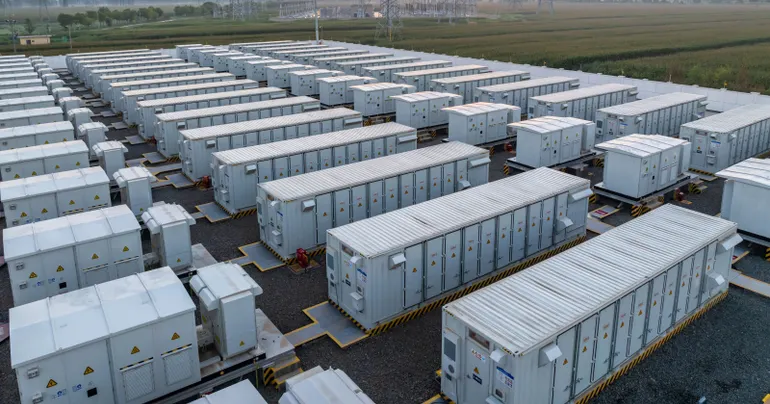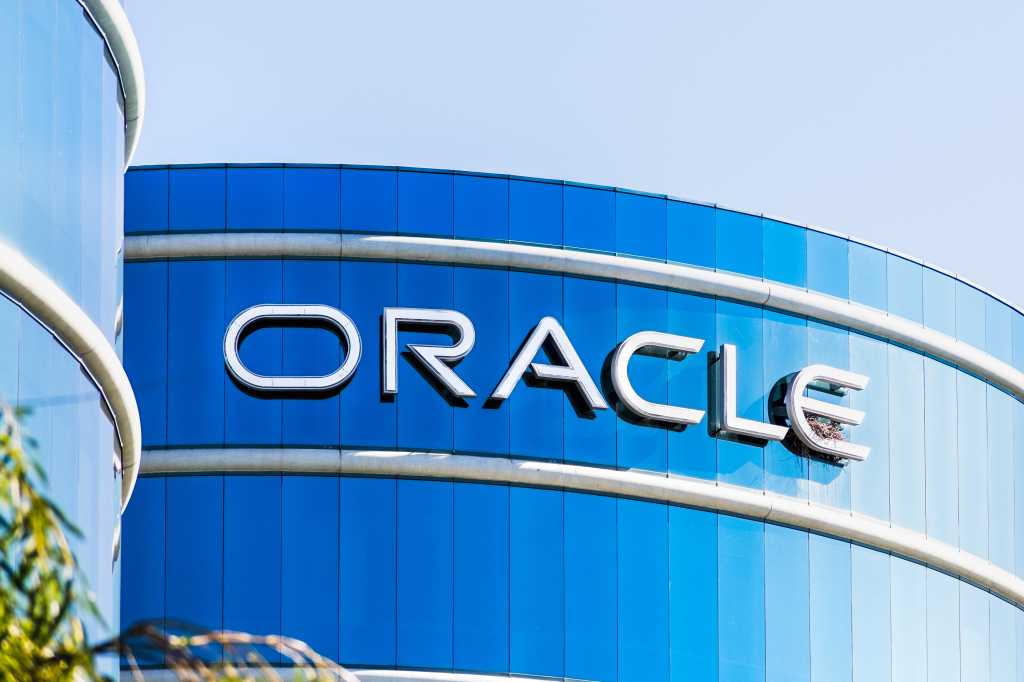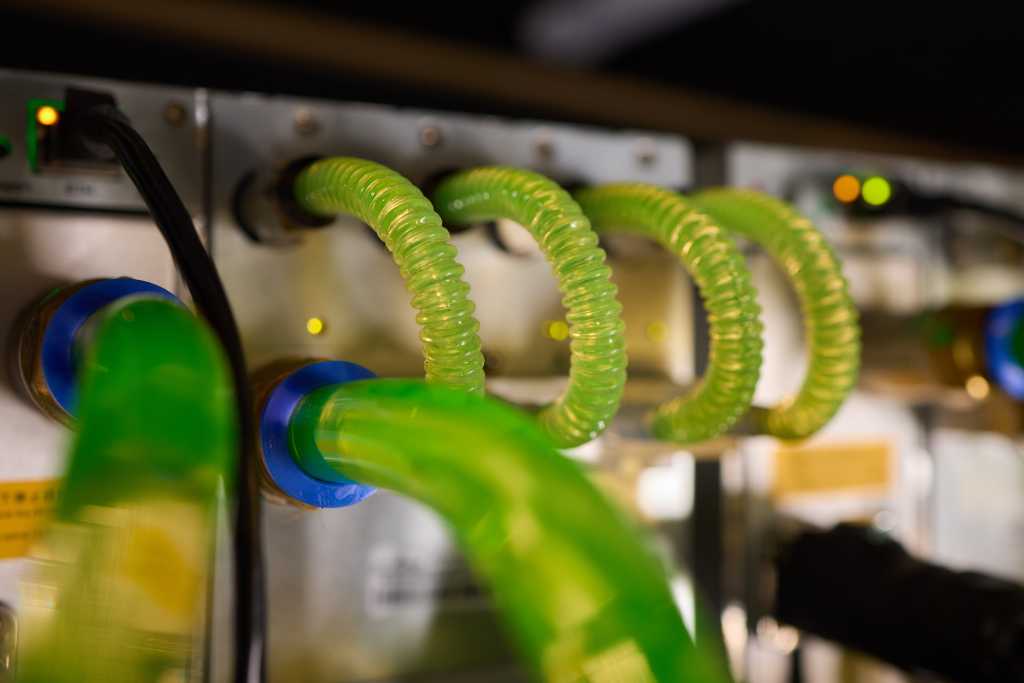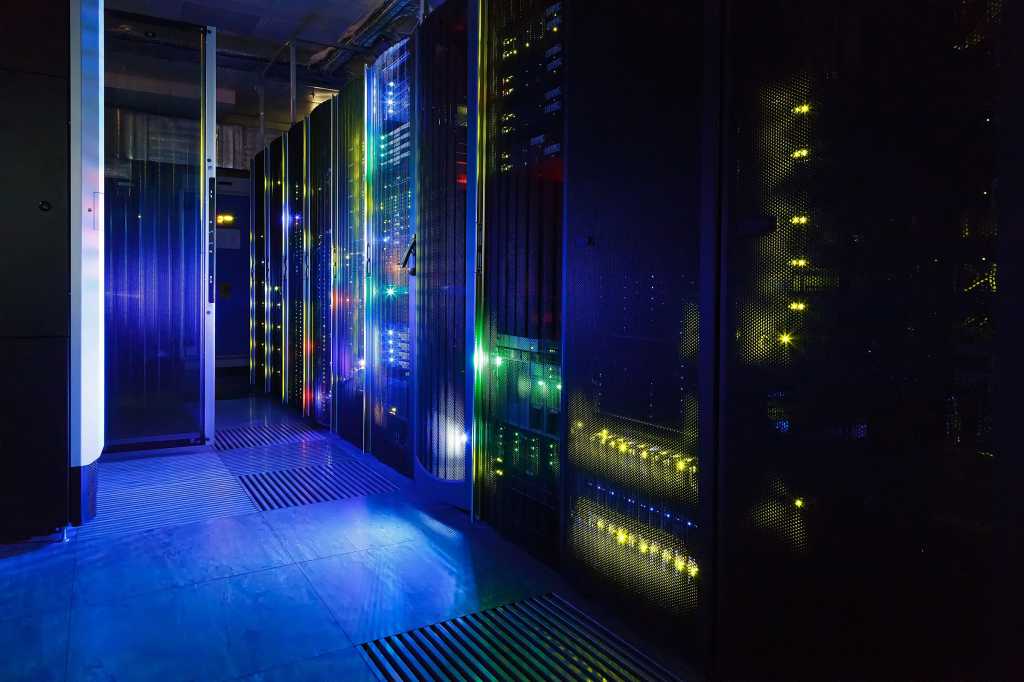Join our daily and weekly newsletters for the latest updates and exclusive content on industry-leading AI coverage. Learn More
To date, vibe coding platforms have largely relied on existing large language models (LLMs) to help write code.
However, writing code is only one of many different tasks developers need to perform to build a full enterprise-grade production platform. Other tasks in the complete software engineering workflow require using different tools to help review, commit and maintain code over time. It’s a challenge Windsurf (formerly Codeium) is taking on with a series of new frontier AI models it calls SWE-1 (software engineer 1) as part of the company’s Wave 9 update.
The news comes as Windsurf is reportedly in the midst of being acquired by AI leader OpenAI for as much as $3 billion. That deal has not yet formally closed, and Windsurf is not currently publicly commenting on the deal.
SWE-1 is a family of frontier-class AI models specifically designed to accelerate the entire software engineering process. Unlike general-purpose AI models that have been adapted for coding tasks, the SWE-1 family was built to address the full spectrum of software engineering activities.
The new models aim to support developers through multiple surfaces, incomplete work states and long-running tasks that characterize real-world software development. Available immediately to Windsurf users, SWE-1 marks the company’s entry into frontier model development with performance competitive to established foundation models, but with a focus on software engineering workflows.
“Our main goal here is to accelerate all software engineering by 99%,” Anshul Ramachandran, head of product and strategy at Windsurf, told VentureBeat.
Enterprise developers need more than just coding-capable models
The core innovation behind SWE-1 is Windsurf’s recognition that coding represents only a fraction of what software engineers actually do.
This approach addresses a critical limitation in current AI coding LLMs. Many different models can be used today to write application code, including OpenAI’s GPT-4.1, Anthropic Claude 3.7 and Google’s Gemini 2.5 Pro I/O edition.
Windsurf has a modular interface that can enable use of multiple different models. Ramachandran explained that Windsurf users have given the company feedback that existing coding models tend to do well with user guidance, but over time tend to miss things.
This limitation stems from a fundamental difference in task structure. While code generation is often a single-shot task, real software engineering involves navigating multiple tools, working with incomplete code and maintaining context across long-running projects.
The SWE-1 family: Purpose-built for different engineering tasks
Rather than creating a one-size-fits-all solution, Windsurf has developed three specialized models:
- SWE-1: Full-size model designed for advanced reasoning and tool use, available to all paid users.
- SWE-1-lite: A smaller but powerful model replacing Windsurf’s existing Cascade Base, available to all users (both free and paid).
- SWE-1-mini: A lightweight model powering passive code predictions in Windsurf Tab, unlimited for all users.
The SWE models were built through an extensive in-house training process focused specifically on software engineering tasks. Ramachandran said that the company used a new data model with sequential steps for training.
Performance benchmarks: How SWE-1 compares
While SWE-1 isn’t positioned to replace foundation models from major labs, Windsurf claims it achieves frontier-class performance specifically for software engineering tasks. The company reports that it substantially outperforms mid-sized foundation models and open-weight models.
However, Windsurf is careful not to oversell these initial results.
“Even our benchmark shows it’s not objectively better than all the other models,” Ramachandran acknowledged.
Instead, the goal is to position SWE-1 as the first step toward purpose-built models that will eventually surpass general-purpose ones for specific engineering tasks — and potentially at a lower cost.
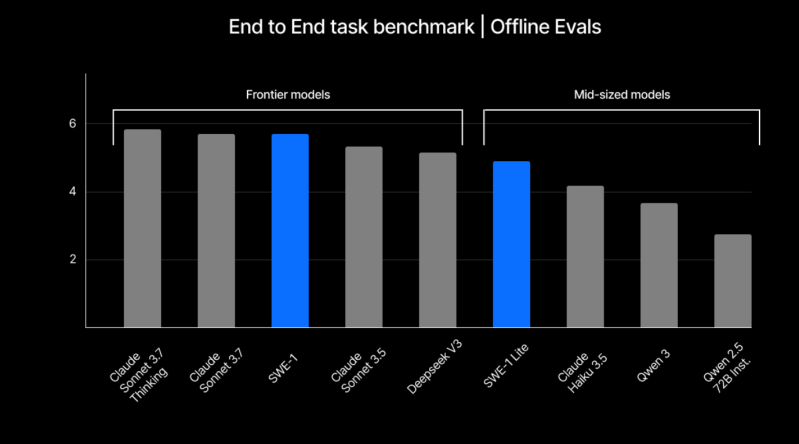
The technical edge: Flow awareness and shared timelines
What makes Windsurf’s approach technically distinctive is its implementation of the flow awareness concept.
The basic idea is that a flow of steps need to happen as part of enterprise development. Rather than just writing code for one specific step, flow awareness is about being aware of the broader context.
Flow awareness is centered on creating a shared timeline of actions between humans and AI in software development. The core idea is to progressively transfer tasks from human to AI by understanding where AI can most effectively assist.
This approach creates a continuous improvement loop for the models.
“As we continue to improve the models, more of the steps in that shared timeline will be flipped from human to AI,” said Ramachandran. “The AI will be able to do more things that the human had to do before because the AI wasn’t right.”
What this means for technical decision-makers
For enterprises building or maintaining software, SWE-1 represents an important evolution in AI-assisted development. Rather than treating AI coding assistants as simply autocomplete tools, this approach promises to accelerate the entire development lifecycle.
The potential impact extends beyond just writing code more quickly. The recognition that application development is more involved will help mature the vibe coding paradigm to be more applicable for stable enterprise software development.
While it’s still early days for SWE-1, this move is important. If and when OpenAI completes the acquisition of Windsurf, the new models could become even more important as they intersect with the larger model research and development resources that will become available.
Technical leaders should consider how much of their development workflow could benefit from AI assistance beyond mere code generation. Teams spending significant time on code reviews, debugging and managing technical debt might see more substantial benefits from tools like SWE-1 than those primarily focused on generating new code.
Daily insights on business use cases with VB Daily
If you want to impress your boss, VB Daily has you covered. We give you the inside scoop on what companies are doing with generative AI, from regulatory shifts to practical deployments, so you can share insights for maximum ROI.
Read our Privacy Policy
Thanks for subscribing. Check out more VB newsletters here.
An error occured.








